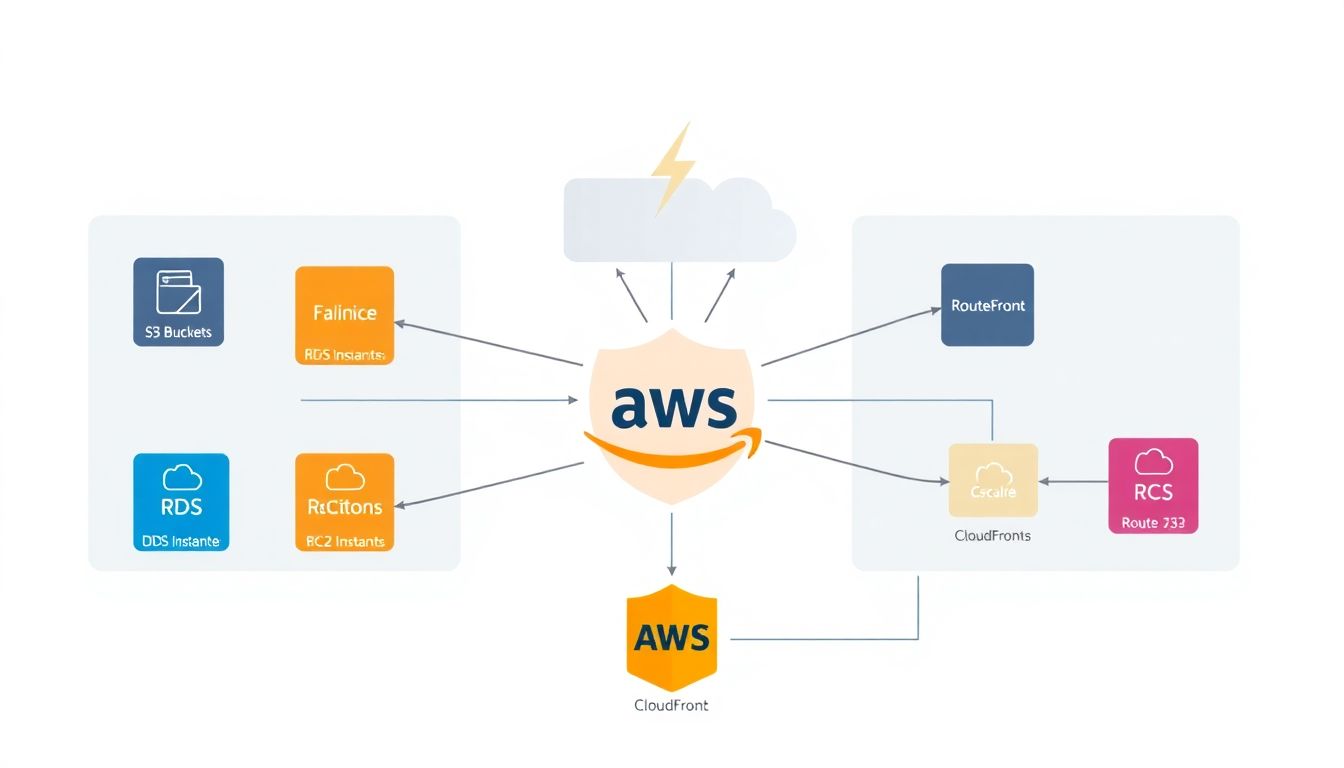Table of contents
- The Rising Tide of Outages: Statistics and Impacts
- The Business Case for Multi-Region DR: Minimizing Downtime and Data Loss
- Setting the Stage: Defining Multi-Region Architecture on AWS
- Understanding AWS's Regional Infrastructure and Services
- Designing Your Multi-Region Disaster Recovery Architecture
- Implementing Your Multi-Region DR Solution on AWS
- Testing and Validating Your Multi-Region DR Setup
- Maintaining and Optimizing Your Multi-Region DR Architecture
- Conclusion: Building a Resilient Future with Multi-Region Disaster Recovery on AWS

Multi-region disaster recovery (DR) is essential for businesses that depend on cloud services. It helps ensure that data and applications remain available even during outages. Unexpected failures can disrupt operations and erode customer trust. In the AWS ecosystem, a solid multi-region architecture provides a safety net for your crucial systems.
The Rising Tide of Outages: Statistics and Impacts
Recent reports show that 2023 saw a significant rise in outages across cloud platforms. Over 50% of businesses faced downtime of more than an hour due to these issues. The impact on revenue can be staggering, with some companies losing thousands per minute. It's clear that businesses need effective DR measures to mitigate these risks.
The Business Case for Multi-Region DR: Minimizing Downtime and Data Loss
Adopting a multi-region DR strategy minimizes both downtime and data loss. By distributing resources across multiple locations, you can ensure that even if one region fails, your services remain operational. This proactive approach helps maintain customer confidence and protects your bottom line.
Setting the Stage: Defining Multi-Region Architecture on AWS
Understanding what a multi-region architecture entails is the first step in building an effective DR plan. AWS allows users to deploy applications in different regions, providing enhanced reliability and redundancy. This setup ensures that services can seamlessly failover without data loss.
Understanding AWS's Regional Infrastructure and Services
AWS Regions and Availability Zones: A Deep Dive
AWS offers multiple regions worldwide, each with multiple availability zones. This structure allows for high availability and redundancy. It’s crucial to design your architecture accordingly, ensuring that your resources span multiple availability zones within a region and across different regions.
Choosing the Right Regions for Your DR Strategy: Factors to Consider
When selecting regions for your DR plan, consider factors like:
Latency: Ensure that backup regions are close enough to minimize delays.
Legal requirements: Data residency laws may dictate where your data can be stored.
Leveraging AWS Services for Disaster Recovery: A Comprehensive Overview
AWS provides several services for DR, including:
Amazon S3 for data storage
RDS for database replication
Amazon Route 53 for DNS management
Incorporating these services into your architecture strengthens your DR capabilities.
Designing Your Multi-Region Disaster Recovery Architecture
Defining Recovery Time Objectives (RTO) and Recovery Point Objectives (RPO)
Establishing RTO and RPO is critical. RTO determines how quickly you need to restore operations after a disaster. RPO specifies how much data you can afford to lose. Identifying these metrics guides your architecture design and resource allocation.
Architecting for Failover and Failback: Strategies and Best Practices
Implement failover and failback strategies. A common approach is using Route 53 for DNS failover, redirecting traffic to standby resources. Regularly test these failover processes to ensure they work as intended.
Data Replication Strategies: Synchronous vs. Asynchronous Replication
Choose between synchronous and asynchronous replication based on your RTO and RPO. Synchronous allows real-time updates but can increase latency. Asynchronous offers more flexibility but may risk some data loss.
Implementing Your Multi-Region DR Solution on AWS
Utilizing AWS Replication Services: AWS Storage Gateway, AWS Database Migration Service, etc.
AWS offers various replication services. Consider using AWS Storage Gateway for seamless backup to the cloud and RDS for database synchronization. These tools simplify data management between regions.
Configuring Networking for Disaster Recovery: VPC Peering and Direct Connect
Networking is critical for DR. Configure VPC Peering to facilitate communication between regions. AWS Direct Connect provides a dedicated network connection, ensuring lower latency and higher bandwidth.
Orchestrating Failover and Failback: Automation Tools and Strategies
Automation tools like AWS Lambda can help orchestrate failover processes. Set up scripts to automatically switch resources during a disaster. This reduces human error and speeds up recovery times.
Testing and Validating Your Multi-Region DR Setup
Conducting Regular DR Drills: Simulating Disaster Scenarios
Regularly conduct disaster recovery drills. Simulating various scenarios helps identify weaknesses in your plan and prepares your team for real-life incidents.
Monitoring and Alerting: Early Warning Systems for Potential Issues
Invest in monitoring tools to keep tabs on your environment. AWS CloudWatch can alert you to anomalies, allowing you to respond swiftly before minor issues escalate.
Post-Drill Analysis and Optimization: Continuous Improvement
After drills, review the outcomes. Assess what worked well and where improvements are needed. Continuous optimization is key to a robust DR strategy.
Maintaining and Optimizing Your Multi-Region DR Architecture
Ongoing Monitoring and Maintenance: Ensuring High Availability
Regularly maintain your architecture. Update software and manage resources to ensure high availability. Consistent monitoring helps prevent potential outages.
Cost Optimization Strategies for Multi-Region DR
Balancing costs and performance is essential. Use AWS cost management tools to analyze spending. Identify areas where you can reduce costs without compromising performance.
Scalability and Future-Proofing Your DR Solution
Your DR strategy should be scalable. AWS services allow you to adjust resources as your business grows. Ensure your architecture can adapt to future needs.
Conclusion: Building a Resilient Future with Multi-Region Disaster Recovery on AWS
Key Takeaways: Essential Considerations for Success
Define your RTO and RPO clearly.
Utilize AWS services effectively.
Regularly test your DR plan.
Future Trends in Cloud-Based Disaster Recovery
As technology evolves, expect more automation and integration in DR solutions. AI and machine learning will play a significant role in enhancing recovery strategies.
Actionable Next Steps: Getting Started with Your Multi-Region DR Plan
Begin by evaluating your current architecture. Identify gaps and outline your objectives. Start building a robust multi-region DR plan today to safeguard your future.
